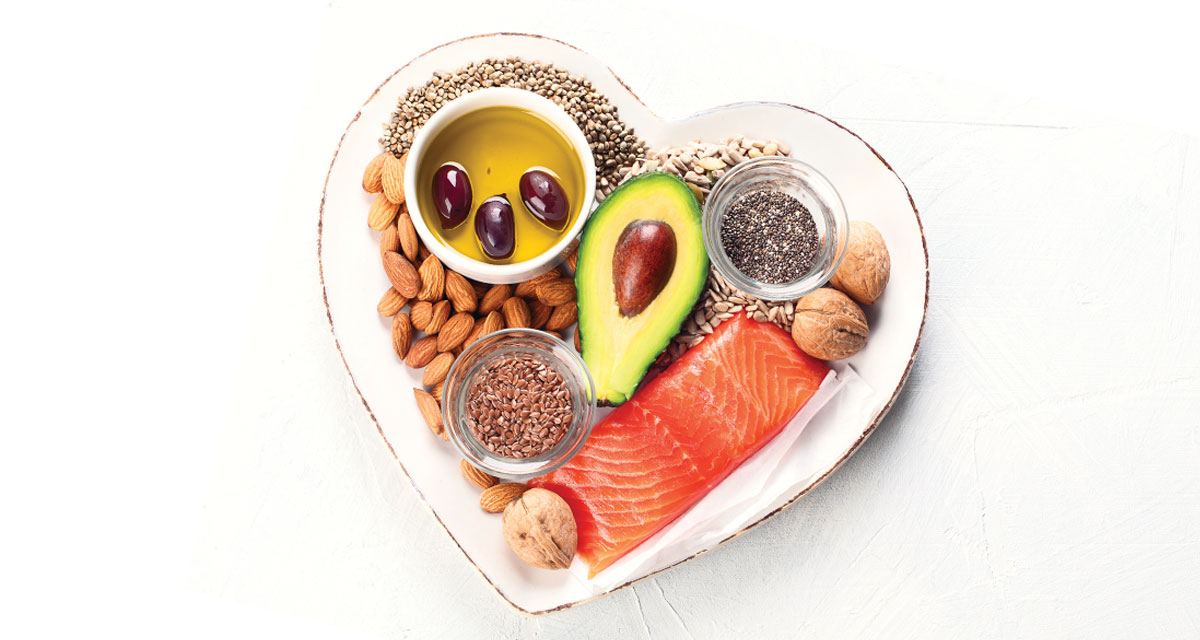Few words in the English language cause the immediate reaction of a scowl; yet, “fat” tends to conjure up a self-reflection of body image and years of restrictive dieting. In the desire to leap away from the connotation, it’s time to differentiate between good and bad fats. Let us explore the facts and fallacies.
Good Fat
Americans invest 25 million dollars annually in the goal of losing weight. Most fad diets reject the principles outlined in basic food groups by controlling the intake from a specific list. In every debate about dietary fats, the body cannot live without, or manufacture the structure and nutritional properties, of the omega-3s and omega-6s. Did you know particular foods provide a source of energy, particularly at rest and during low-intensity exercise?
They also:
- direct health to the central nervous system and brain tissue;
- absorb fat-soluble vitamins;
- aid cell development within the body and produce hormones.
The Four Fatty Acids
On a molecular level, fatty acids comprise carbon, hydrogen, and oxygen. As the chemistry changes, chains of atoms impact how each fatty acid behaves.
- Saturated: The chain’s weight bears heavily on carbon. Think of foods that feel comprised entirely of fat, such as butter, hard cheeses, palm, and coconut oil. Collectively they raise LDL cholesterol levels and increase the risk of heart disease, if not consumed in moderation. To improve heart health, limit your intake to less than seven percent!
- Monounsaturated: One hydrogen atom creates an incomplete chain, forming double bonds between carbon molecules. Although much healthier than saturated fats, MUFAs provide the principal source of fat in avocados, nuts, seeds, and oils, such as olive and canola.
- Trans fat: Processed foods require trans fats to create a shelf-stable product; therefore, the chain’s structure is artificial. It is manufactured by adding hydrogen to vegetable oil to create a semi-solid product known as hydrogenated oil. Avoid products with the label, including fast foods, vegetable shortening, processed and baked goods, and pizza.
- Polyunsaturated: Derived from linoleic acid, the Omega-6 group contains corn, safflower, soybean, and sunflower oils. Additionally, Omega-3s include linoleic acids from rapeseed and evening primrose oils, walnuts, and oily fish.
The Best Diet
Consuming foods with Omega 3s, such as fish, enriches brain health, lowers the risk of heart disease, digestive disorders, arthritis, and muscle pain. Omega 6s, on the other hand, are necessary for skin health. Try adding the following foods to your diet.
- Avocados: Trendy and a versatile superfood, the fruit is well known for its healthy fats and fiber. Eat an avocado daily!
- Broccoli: Did you know eating broccoli helps conditions related to inflammation, specifically joint pain? It contains the chemical sulforaphane. Don’t skip your broccoli, which is high in nutrients, vitamins, minerals, and a good source of fatty acids.
- Chia Seeds: Rich in fiber, protein, Omega 3s, antioxidants, and micronutrients, the seeds aid in weight loss, and reduce inflammation, blood cholesterol, and triglycerides. Try cooking with Chia seeds, or consume as a protein-enriched drink.
- Eggs: Befriend a neighbor who has a coop. The happy chicken will produce a bright-orange yoke and support one cup, or 12%, of your daily needs!
- Fish and Seafood: The top source of fatty acids is in halibut, mackerel, oyster, salmon, and sardines. Mackerel contains 174% of your daily requirement, while herring and salmon provide 45%. It’s a great excuse to eat sushi daily!
- Flaxseed Oil: For health inside the body and out, most users take either a capsule or teaspoon of oil daily. Start researching the benefits to see if you should start taking the supplement daily.
- Sunflower Oil: Available in a high-oleic version, sunflower oil produces a healthier fat than olive oil.
- Vitamin E: this antioxidant fights inflammation and protects the body from cardiovascular disease, eye disorders, and cognitive decline.
- Walnuts: A half cup of dry walnuts contains 66% of the necessary intake!
Fat doesn’t have to be a dirty word. Start making promises to avoid processed foods and start incorporating healthy fats in your diet. Your body will thank you for it!
Next Month: “Fact and Fallacy about Bread”



















